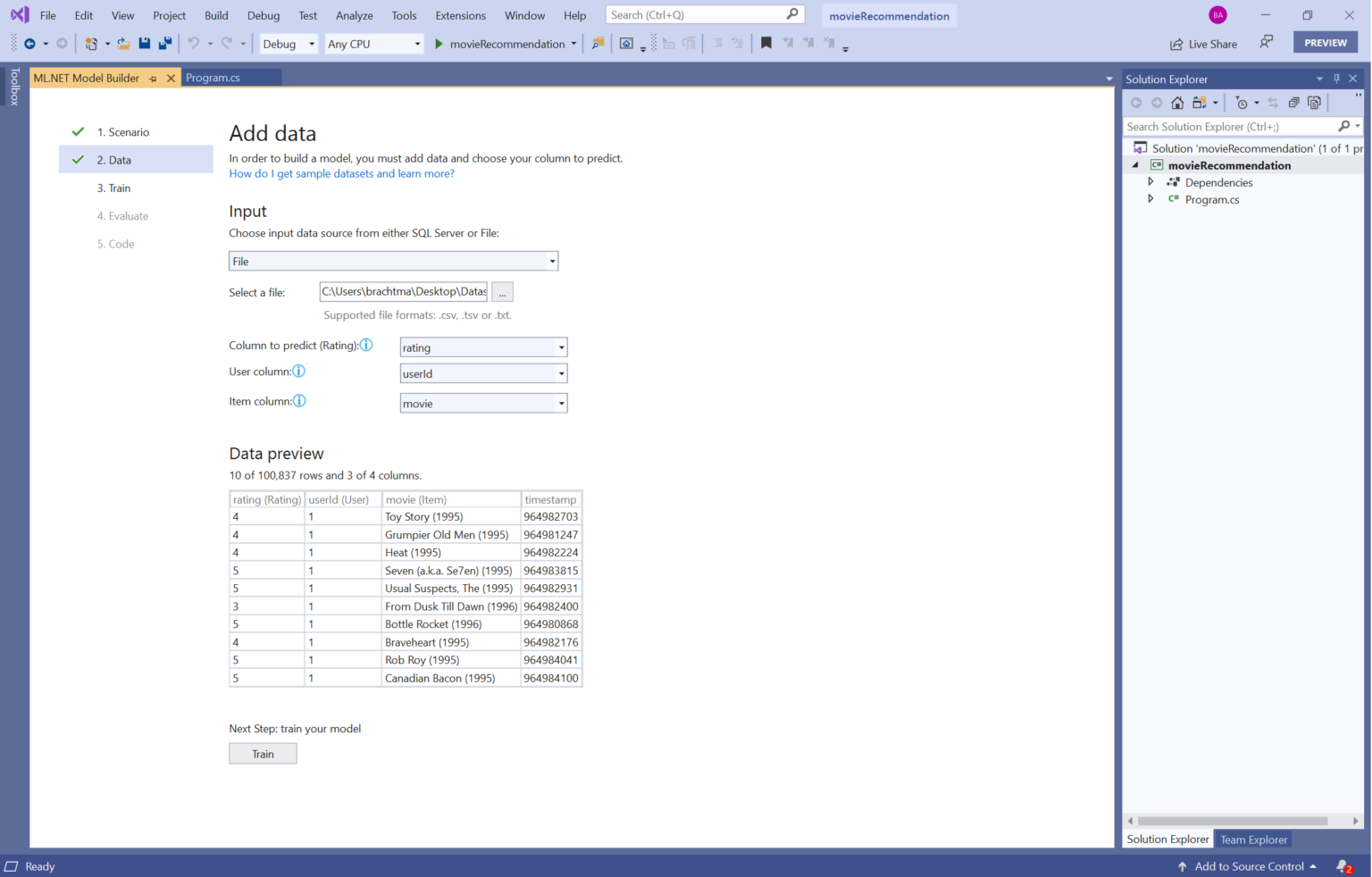

ML.NET MODEL BUILDER HOW TO
I’ll write about how to use this generated code on the near future. Using one of the images that I created at Ignite in Orlando, the trained model get’s a human with a 99% of accuracy.Īnd, the final step is to add the generated model and code to our project. Before Model Builder last step, we have the chance to test the model with some test images. Once the training is complete, we have a decent accuracy in our model, so it’s time to test.
ML.NET MODEL BUILDER PC
These are 24 drawings images, with 3 labels, and in a PC with a I7, 32GB of Ram and an SSD, the training process took a little longer than 2 minutes. I’m using the sample set of drawings that we used on the InsiderDev Tour, for Custom Vision. This may take a while, depending on your hardware. Once the folder is selected, we can see a preview of the images and labels loaded from the folder.įor more information about how to organize images for this scenario, refer to Load training data into Model Builder.Īnd now we start the training process. Each subfolder contains the image files belonging to its category.This top-level directory contains one subfolder for each of the categories to predict.To load images into Model Builder, provide the path to a single top-level directory: Important: Model Builder expects image data to be JPG or PNG files organized in folders that correspond to the categories of the classification. It follows the Model Builder standard workflow, starting with the selection of the scenario:Īnd then selecting a folder with the Images. This tutorial scales that process down even further, using only a dozen training images.Īnd now, I found that Model Builder, also supports an Image Classification Scenario. millions of labeled images and build a customized model fairly quickly (within an hour on a machine without a GPU). While not as effective as training a custom model from scratch, transfer learning allows you to shortcut this process by working with thousands of images vs. Training an Image Classification model from scratch requires setting millions of parameters, a ton of labeled training data and a vast amount of compute resources (hundreds of GPU hours). The ML.NET model makes use of part of the TensorFlow model in its pipeline to train a model to classify images into 3 categories. The TensorFlow model was trained to classify images into a thousand categories. Learn how to transfer the knowledge from an existing TensorFlow model into a new ML.NET image classification model. We even have an amazing tutorial, to create our own image classification model from zero Tutorial: Generate an ML.NET image classification model from a pre-trained TensorFlow model In this sample app you create your own custom image classifier model by natively training a TensorFlow model from ML.NET API with your own images. Net Samples, we have sample scenarios like Image Classification Model Training – Preferred API (Based on native TensorFlow transfer learning)

Working with images was supported for a while in Machine Learning.Net. Model Builder supports AutoML, which automatically explores different machine learning algorithms and settings to help you find the one that best suits your scenario. Prior machine learning expertise is not required. ML.NET Model Builder provides an easy to understand visual interface to build, train, and deploy custom machine learning models. Let’s start with the official Model Builder definition (see references):
ML.NET MODEL BUILDER UPDATE
I’m getting ready for my last event of the year, and I just realize that in the latest update of Model Builder, we have the chance to build our own Image Classifier scenario.


 0 kommentar(er)
0 kommentar(er)
